-
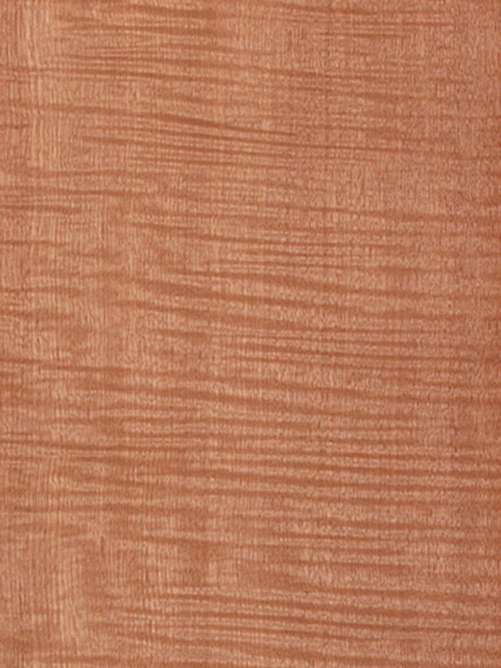 Also called African cherry, Makore shares the light pink to deep red coloring, dark growth lines, and small pores common to cherry. In architectural installations, it has the added benefit of availability in large sizes not found in American cherry. Cut on the quarter, Makore shows a contrasting stripe that may be plain or crossed with a variety of decorative figures. Flat cut, it bears the distinctive cathedral grain pattern. Learn About Veneer Cut & Matching
Also called African cherry, Makore shares the light pink to deep red coloring, dark growth lines, and small pores common to cherry. In architectural installations, it has the added benefit of availability in large sizes not found in American cherry. Cut on the quarter, Makore shows a contrasting stripe that may be plain or crossed with a variety of decorative figures. Flat cut, it bears the distinctive cathedral grain pattern. Learn About Veneer Cut & Matching -
 Also called African cherry, Makore shares the light pink to deep red coloring, dark growth lines, and small pores common to cherry. In architectural installations, it has the added benefit of availability in large sizes not found in American cherry. Cut on the quarter, Makore shows a contrasting stripe that may be plain or crossed with a variety of decorative figures. Flat cut, it bears the distinctive cathedral grain pattern. Learn About Veneer Cut & Matching
Also called African cherry, Makore shares the light pink to deep red coloring, dark growth lines, and small pores common to cherry. In architectural installations, it has the added benefit of availability in large sizes not found in American cherry. Cut on the quarter, Makore shows a contrasting stripe that may be plain or crossed with a variety of decorative figures. Flat cut, it bears the distinctive cathedral grain pattern. Learn About Veneer Cut & Matching -
 From the same tree that produces maple syrup, comes this beautiful veneer that ranges in color from snow white to warm yellow; has a close, fine luminous texture; and a lovely straight grain that may be interspersed with natural character marks. A wide range of gorgeous figures and wild grain distortions—from curly to bird’s eye to maple burl—are sought after for distinctive paneling and furniture. Flat cut maple displays the distinctive heart or cathedral pattern. Learn About Veneer Cut & Matching
From the same tree that produces maple syrup, comes this beautiful veneer that ranges in color from snow white to warm yellow; has a close, fine luminous texture; and a lovely straight grain that may be interspersed with natural character marks. A wide range of gorgeous figures and wild grain distortions—from curly to bird’s eye to maple burl—are sought after for distinctive paneling and furniture. Flat cut maple displays the distinctive heart or cathedral pattern. Learn About Veneer Cut & Matching -
 From the same tree that produces maple syrup, comes this beautiful veneer that ranges in color from snow white to warm yellow; has a close, fine luminous texture; and a lovely straight grain that may be interspersed with natural character marks. A wide range of gorgeous figures and wild grain distortions—from curly to bird’s eye to maple burl—are sought after for distinctive paneling and furniture. Flat cut maple displays the distinctive heart or cathedral pattern. Learn About Veneer Cut & Matching
From the same tree that produces maple syrup, comes this beautiful veneer that ranges in color from snow white to warm yellow; has a close, fine luminous texture; and a lovely straight grain that may be interspersed with natural character marks. A wide range of gorgeous figures and wild grain distortions—from curly to bird’s eye to maple burl—are sought after for distinctive paneling and furniture. Flat cut maple displays the distinctive heart or cathedral pattern. Learn About Veneer Cut & Matching -
 From the same tree that produces maple syrup, comes this beautiful veneer that ranges in color from snow white to warm yellow; has a close, fine luminous texture; and a lovely straight grain that may be interspersed with natural character marks. A wide range of gorgeous figures and wild grain distortions—from curly to bird’s eye to maple burl—are sought after for distinctive paneling and furniture. Flat cut maple displays the distinctive heart or cathedral pattern. Learn About Veneer Cut & Matching
From the same tree that produces maple syrup, comes this beautiful veneer that ranges in color from snow white to warm yellow; has a close, fine luminous texture; and a lovely straight grain that may be interspersed with natural character marks. A wide range of gorgeous figures and wild grain distortions—from curly to bird’s eye to maple burl—are sought after for distinctive paneling and furniture. Flat cut maple displays the distinctive heart or cathedral pattern. Learn About Veneer Cut & Matching -
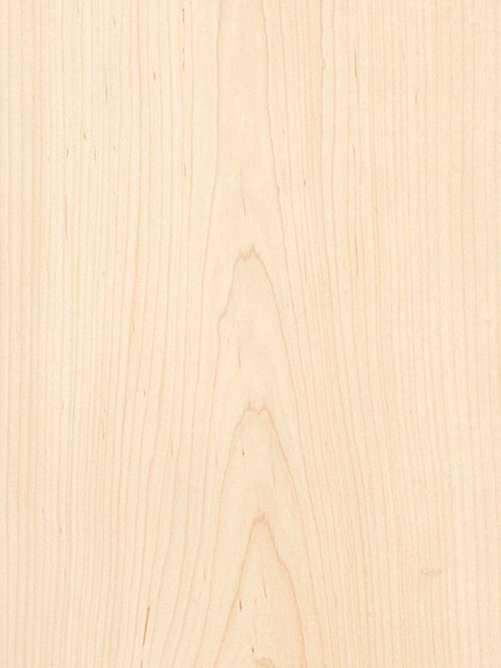 From the same tree that produces maple syrup, comes this beautiful veneer that ranges in color from snow white to warm yellow; has a close, fine luminous texture; and a lovely straight grain that may be interspersed with natural character marks. A wide range of gorgeous figures and wild grain distortions—from curly to bird’s eye to maple burl—are sought after for distinctive paneling and furniture. Flat cut maple displays the distinctive heart or cathedral pattern. Learn About Veneer Cut & Matching
From the same tree that produces maple syrup, comes this beautiful veneer that ranges in color from snow white to warm yellow; has a close, fine luminous texture; and a lovely straight grain that may be interspersed with natural character marks. A wide range of gorgeous figures and wild grain distortions—from curly to bird’s eye to maple burl—are sought after for distinctive paneling and furniture. Flat cut maple displays the distinctive heart or cathedral pattern. Learn About Veneer Cut & Matching -
 From the same tree that produces maple syrup, comes this beautiful veneer that ranges in color from snow white to warm yellow; has a close, fine luminous texture; and a lovely straight grain that may be interspersed with natural character marks. A wide range of gorgeous figures and wild grain distortions—from curly to bird’s eye to maple burl—are sought after for distinctive paneling and furniture. Flat cut maple displays the distinctive heart or cathedral pattern. Learn About Veneer Cut & Matching
From the same tree that produces maple syrup, comes this beautiful veneer that ranges in color from snow white to warm yellow; has a close, fine luminous texture; and a lovely straight grain that may be interspersed with natural character marks. A wide range of gorgeous figures and wild grain distortions—from curly to bird’s eye to maple burl—are sought after for distinctive paneling and furniture. Flat cut maple displays the distinctive heart or cathedral pattern. Learn About Veneer Cut & Matching -
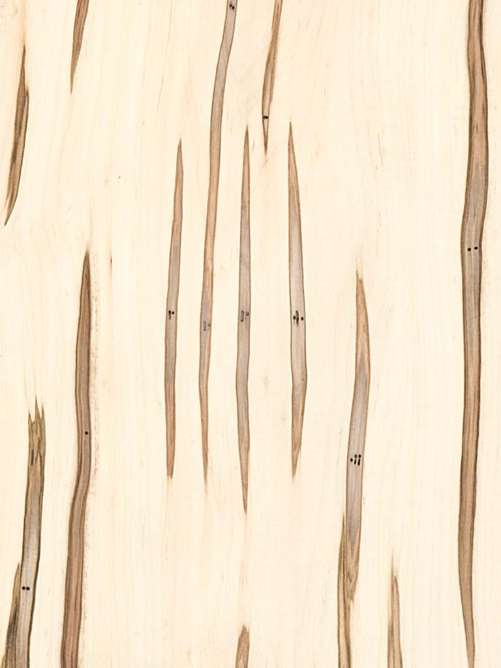 From the same tree that produces maple syrup, comes this beautiful veneer that ranges in color from snow white to warm yellow; has a close, fine luminous texture; and a lovely straight grain that may be interspersed with natural character marks. A wide range of gorgeous figures and wild grain distortions—from curly to bird’s eye to maple burl—are sought after for distinctive paneling and furniture. Flat cut maple displays the distinctive heart or cathedral pattern. Learn About Veneer Cut & Matching
From the same tree that produces maple syrup, comes this beautiful veneer that ranges in color from snow white to warm yellow; has a close, fine luminous texture; and a lovely straight grain that may be interspersed with natural character marks. A wide range of gorgeous figures and wild grain distortions—from curly to bird’s eye to maple burl—are sought after for distinctive paneling and furniture. Flat cut maple displays the distinctive heart or cathedral pattern. Learn About Veneer Cut & Matching -
 Mappa burl is actually the burl wood of a European poplar. This highly decorative veneer is particularly contrasty—its light brown heartwood is peppered by an unusual darker, bark-like pattern of tight clusters. This burl is stunning—an extraordinary and unexpected choice for furniture, cabinetry, and architectural applications. Learn About Veneer Cut & Matching
Mappa burl is actually the burl wood of a European poplar. This highly decorative veneer is particularly contrasty—its light brown heartwood is peppered by an unusual darker, bark-like pattern of tight clusters. This burl is stunning—an extraordinary and unexpected choice for furniture, cabinetry, and architectural applications. Learn About Veneer Cut & Matching -
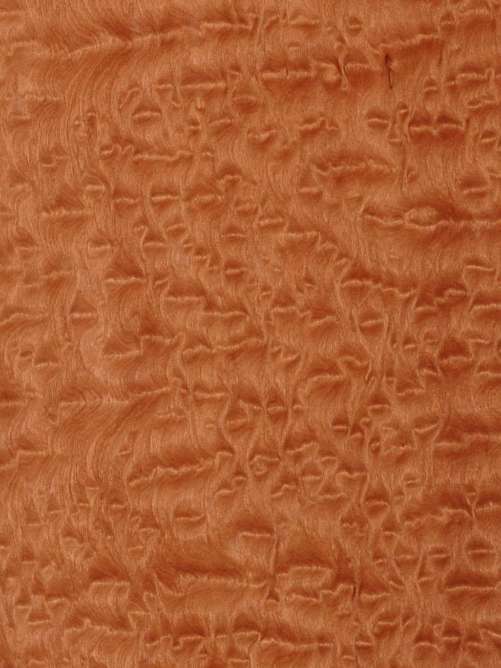 One of the largest trees in equatorial Africa, this tropical hardwood’s immense size ensures large leaves and volumes of veneer well suited for architectural use. Regarded for its shimmering luster that refracts light, this species ranges from pinkish brown to rich red in color with a fine, even texture, and a typically straight grain that may be decorated with a wide range of widely variable figures, including a highly prized Pommele. As with most veneers, almost every log is unique. Learn About Veneer Cut & Matching
One of the largest trees in equatorial Africa, this tropical hardwood’s immense size ensures large leaves and volumes of veneer well suited for architectural use. Regarded for its shimmering luster that refracts light, this species ranges from pinkish brown to rich red in color with a fine, even texture, and a typically straight grain that may be decorated with a wide range of widely variable figures, including a highly prized Pommele. As with most veneers, almost every log is unique. Learn About Veneer Cut & Matching -
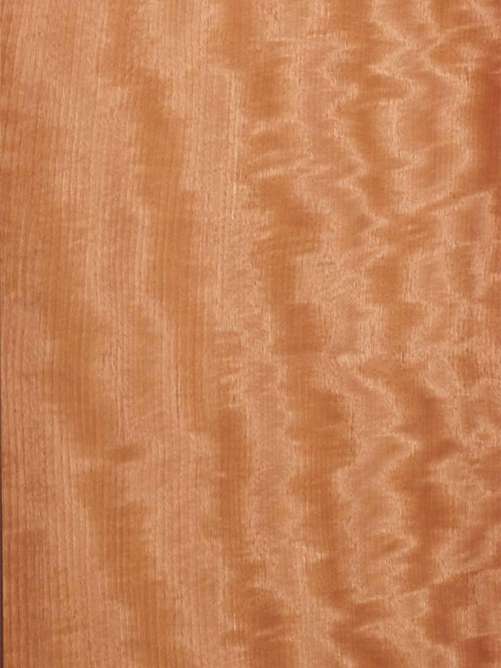 One of the largest trees in equatorial Africa, this tropical hardwood’s immense size ensures large leaves and volumes of veneer well suited for architectural use. Regarded for its shimmering luster that refracts light, this species ranges from pinkish brown to rich red in color with a fine, even texture, and a typically straight grain that may be decorated with a wide range of widely variable figures, including a highly prized Pommele. As with most veneers, almost every log is unique. Learn About Veneer Cut & Matching
One of the largest trees in equatorial Africa, this tropical hardwood’s immense size ensures large leaves and volumes of veneer well suited for architectural use. Regarded for its shimmering luster that refracts light, this species ranges from pinkish brown to rich red in color with a fine, even texture, and a typically straight grain that may be decorated with a wide range of widely variable figures, including a highly prized Pommele. As with most veneers, almost every log is unique. Learn About Veneer Cut & Matching -
 One of the largest trees in equatorial Africa, this tropical hardwood’s immense size ensures large leaves and volumes of veneer well suited for architectural use. Regarded for its shimmering luster that refracts light, this species ranges from pinkish brown to rich red in color with a fine, even texture, and a typically straight grain that may be decorated with a wide range of widely variable figures, including a highly prized Pommele. As with most veneers, almost every log is unique. Learn About Veneer Cut & Matching
One of the largest trees in equatorial Africa, this tropical hardwood’s immense size ensures large leaves and volumes of veneer well suited for architectural use. Regarded for its shimmering luster that refracts light, this species ranges from pinkish brown to rich red in color with a fine, even texture, and a typically straight grain that may be decorated with a wide range of widely variable figures, including a highly prized Pommele. As with most veneers, almost every log is unique. Learn About Veneer Cut & Matching -
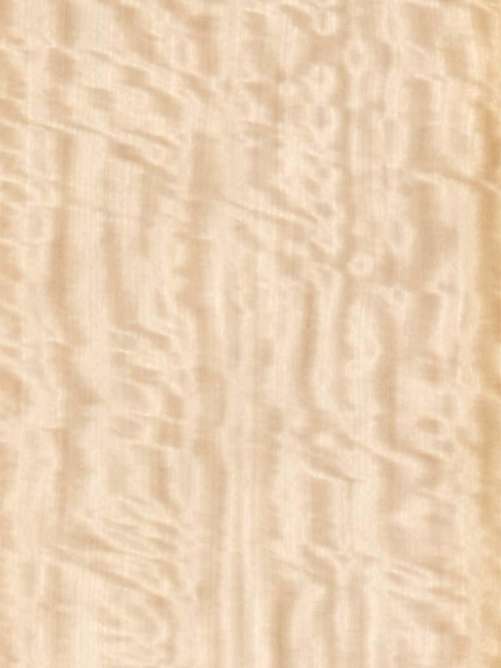 Movingui is an exotic wood with a lustrous surface, fine texture, and bright lemony-gold to orange-brown color. It has a fine, even texture, and produces a variety of figures including fiddle back, mottle, and bee’s wing. Deviations in the fiber appear as horizontal stripes that emphasize its satiny finish. Because it resembles satinwood, particularly in its intense luster, it’s sometimes called Nigerian satinwood. Learn About Veneer Cut & Matching
Movingui is an exotic wood with a lustrous surface, fine texture, and bright lemony-gold to orange-brown color. It has a fine, even texture, and produces a variety of figures including fiddle back, mottle, and bee’s wing. Deviations in the fiber appear as horizontal stripes that emphasize its satiny finish. Because it resembles satinwood, particularly in its intense luster, it’s sometimes called Nigerian satinwood. Learn About Veneer Cut & Matching -
 This contrasty African relative of rosewood has a deep brown background with notable dark brown to ebony streaking and a nice natural luster. Outside Africa, it’s increasingly used as a more affordable substitute for walnut. Produced in both quarter and flat cut veneers, this intense and well-veined veneer is in demand for high-end architectural settings--the stronger the veining, the more valuable the wood. Due to its excellent tonal qualities, the wood is prized for the production of musical instruments. Learn About Veneer Cut & Matching
This contrasty African relative of rosewood has a deep brown background with notable dark brown to ebony streaking and a nice natural luster. Outside Africa, it’s increasingly used as a more affordable substitute for walnut. Produced in both quarter and flat cut veneers, this intense and well-veined veneer is in demand for high-end architectural settings--the stronger the veining, the more valuable the wood. Due to its excellent tonal qualities, the wood is prized for the production of musical instruments. Learn About Veneer Cut & Matching -
 One of the most common trees in European forests, this oak has long been associated with the mythological gods due to its immense size, strength, and longevity. Like most oaks, the grain is straight with broad rays that produce a lively flake effect in flat or quarter cut wood and straight combed grain in rift cut. The golden-brown wood is slightly darker than American white oak and slightly lighter than English brown oak. Fumed veneer produces a rich chocolate-brown color similar to tropical and African woods. CoCo (color-imbued) options are available in several shades of gray and brown. Vintage oak is sliced from the hand-hewn beams of reclaimed. Learn About Veneer Cut & Matching
One of the most common trees in European forests, this oak has long been associated with the mythological gods due to its immense size, strength, and longevity. Like most oaks, the grain is straight with broad rays that produce a lively flake effect in flat or quarter cut wood and straight combed grain in rift cut. The golden-brown wood is slightly darker than American white oak and slightly lighter than English brown oak. Fumed veneer produces a rich chocolate-brown color similar to tropical and African woods. CoCo (color-imbued) options are available in several shades of gray and brown. Vintage oak is sliced from the hand-hewn beams of reclaimed. Learn About Veneer Cut & Matching -
 One of the most common trees in European forests, this oak has long been associated with the mythological gods due to its immense size, strength, and longevity. Like most oaks, the grain is straight with broad rays that produce a lively flake effect in flat or quarter cut wood and straight combed grain in rift cut. The golden-brown wood is slightly darker than American white oak and slightly lighter than English brown oak. Fumed veneer produces a rich chocolate-brown color similar to tropical and African woods. CoCo (color-imbued) options are available in several shades of gray and brown. Vintage oak is sliced from the hand-hewn beams of reclaimed. Learn About Veneer Cut & Matching
One of the most common trees in European forests, this oak has long been associated with the mythological gods due to its immense size, strength, and longevity. Like most oaks, the grain is straight with broad rays that produce a lively flake effect in flat or quarter cut wood and straight combed grain in rift cut. The golden-brown wood is slightly darker than American white oak and slightly lighter than English brown oak. Fumed veneer produces a rich chocolate-brown color similar to tropical and African woods. CoCo (color-imbued) options are available in several shades of gray and brown. Vintage oak is sliced from the hand-hewn beams of reclaimed. Learn About Veneer Cut & Matching -
 One of the most common trees in European forests, this oak has long been associated with the mythological gods due to its immense size, strength, and longevity. Like most oaks, the grain is straight with broad rays that produce a lively flake effect in flat or quarter cut wood and straight combed grain in rift cut. The golden-brown wood is slightly darker than American white oak and slightly lighter than English brown oak. Fumed veneer produces a rich chocolate-brown color similar to tropical and African woods. CoCo (color-imbued) options are available in several shades of gray and brown. Vintage oak is sliced from the hand-hewn beams of reclaimed. Learn About Veneer Cut & Matching
One of the most common trees in European forests, this oak has long been associated with the mythological gods due to its immense size, strength, and longevity. Like most oaks, the grain is straight with broad rays that produce a lively flake effect in flat or quarter cut wood and straight combed grain in rift cut. The golden-brown wood is slightly darker than American white oak and slightly lighter than English brown oak. Fumed veneer produces a rich chocolate-brown color similar to tropical and African woods. CoCo (color-imbued) options are available in several shades of gray and brown. Vintage oak is sliced from the hand-hewn beams of reclaimed. Learn About Veneer Cut & Matching -
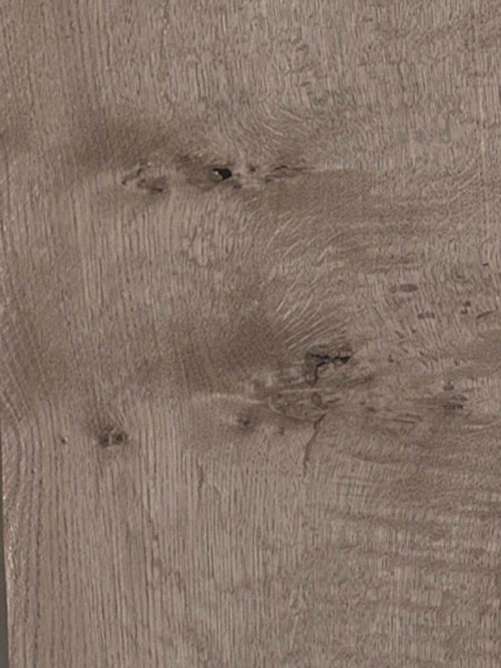 One of the most common trees in European forests, this oak has long been associated with the mythological gods due to its immense size, strength, and longevity. Like most oaks, the grain is straight with broad rays that produce a lively flake effect in flat or quarter cut wood and straight combed grain in rift cut. The golden-brown wood is slightly darker than American white oak and slightly lighter than English brown oak. Fumed veneer produces a rich chocolate-brown color similar to tropical and African woods. CoCo (color-imbued) options are available in several shades of gray and brown. Vintage oak is sliced from the hand-hewn beams of reclaimed. Learn About Veneer Cut & Matching
One of the most common trees in European forests, this oak has long been associated with the mythological gods due to its immense size, strength, and longevity. Like most oaks, the grain is straight with broad rays that produce a lively flake effect in flat or quarter cut wood and straight combed grain in rift cut. The golden-brown wood is slightly darker than American white oak and slightly lighter than English brown oak. Fumed veneer produces a rich chocolate-brown color similar to tropical and African woods. CoCo (color-imbued) options are available in several shades of gray and brown. Vintage oak is sliced from the hand-hewn beams of reclaimed. Learn About Veneer Cut & Matching -
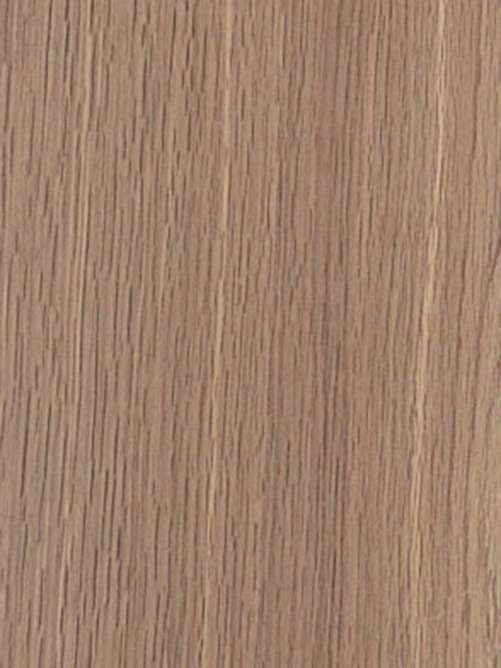 One of the most common trees in European forests, this oak has long been associated with the mythological gods due to its immense size, strength, and longevity. Like most oaks, the grain is straight with broad rays that produce a lively flake effect in flat or quarter cut wood and straight combed grain in rift cut. The golden-brown wood is slightly darker than American white oak and slightly lighter than English brown oak. Fumed veneer produces a rich chocolate-brown color similar to tropical and African woods. CoCo (color-imbued) options are available in several shades of gray and brown. Vintage oak is sliced from the hand-hewn beams of reclaimed. Learn About Veneer Cut & Matching
One of the most common trees in European forests, this oak has long been associated with the mythological gods due to its immense size, strength, and longevity. Like most oaks, the grain is straight with broad rays that produce a lively flake effect in flat or quarter cut wood and straight combed grain in rift cut. The golden-brown wood is slightly darker than American white oak and slightly lighter than English brown oak. Fumed veneer produces a rich chocolate-brown color similar to tropical and African woods. CoCo (color-imbued) options are available in several shades of gray and brown. Vintage oak is sliced from the hand-hewn beams of reclaimed. Learn About Veneer Cut & Matching -
 English brown oak isn’t actually a separate species; rather it’s the result of a fungus that has infested the heartwood of European oak and turned it a rich, dark brown. When that process doesn’t deteriorate the wood itself, it’s sliced to produce this highly desirable, deep brown veneer. Available in flat or quarter cuts as well as rift cut, which produces an exquisite flake pattern when sliced across the wood’s broad medullary rays. Learn About Veneer Cut & Matching
English brown oak isn’t actually a separate species; rather it’s the result of a fungus that has infested the heartwood of European oak and turned it a rich, dark brown. When that process doesn’t deteriorate the wood itself, it’s sliced to produce this highly desirable, deep brown veneer. Available in flat or quarter cuts as well as rift cut, which produces an exquisite flake pattern when sliced across the wood’s broad medullary rays. Learn About Veneer Cut & Matching -
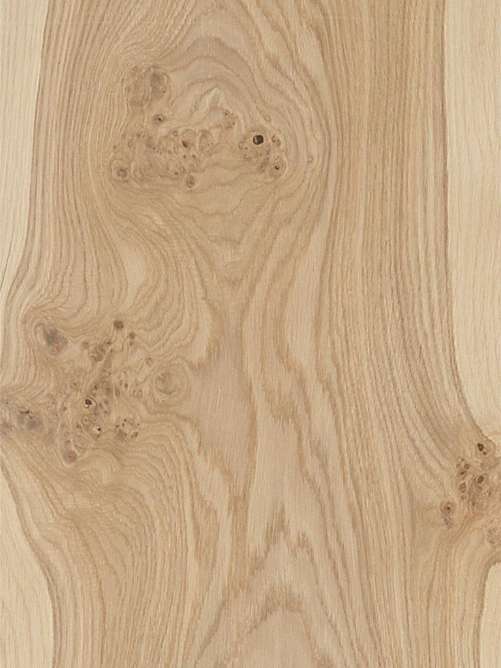 One of the most common trees in European forests, this oak has long been associated with the mythological gods due to its immense size, strength, and longevity. Like most oaks, the grain is straight with broad rays that produce a lively flake effect in flat or quarter cut wood and straight combed grain in rift cut. The golden-brown wood is slightly darker than American white oak and slightly lighter than English brown oak. Fumed veneer produces a rich chocolate-brown color similar to tropical and African woods. CoCo (color-imbued) options are available in several shades of gray and brown. Vintage oak is sliced from the hand-hewn beams of reclaimed wood from old barns and farmhouses across Europe; this rustic looking veneer is intended for use in random matched sequences. Learn About Veneer Cut & Matching
One of the most common trees in European forests, this oak has long been associated with the mythological gods due to its immense size, strength, and longevity. Like most oaks, the grain is straight with broad rays that produce a lively flake effect in flat or quarter cut wood and straight combed grain in rift cut. The golden-brown wood is slightly darker than American white oak and slightly lighter than English brown oak. Fumed veneer produces a rich chocolate-brown color similar to tropical and African woods. CoCo (color-imbued) options are available in several shades of gray and brown. Vintage oak is sliced from the hand-hewn beams of reclaimed wood from old barns and farmhouses across Europe; this rustic looking veneer is intended for use in random matched sequences. Learn About Veneer Cut & Matching -
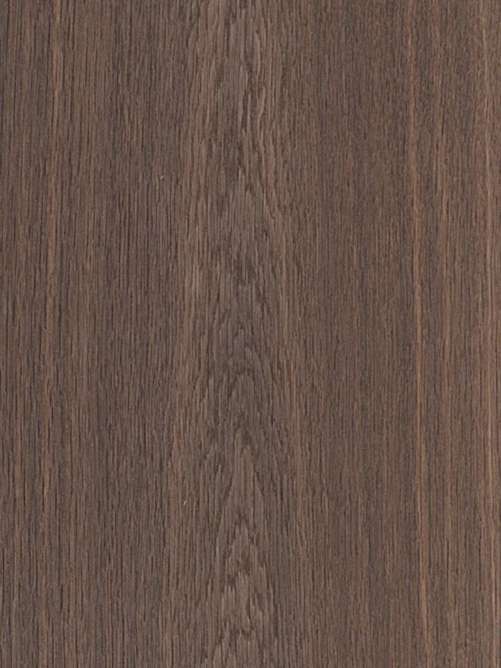 One of the most common trees in European forests, this oak has long been associated with the mythological gods due to its immense size, strength, and longevity. Like most oaks, the grain is straight with broad rays that produce a lively flake effect in flat or quarter cut wood and straight combed grain in rift cut. The golden-brown wood is slightly darker than American white oak and slightly lighter than English brown oak. Fumed veneer produces a rich chocolate-brown color similar to tropical and African woods. CoCo (color-imbued) options are available in several shades of gray and brown. Vintage oak is sliced from the hand-hewn beams of reclaimed wood from old barns and farmhouses across Europe; this rustic looking veneer is intended for use in random matched sequences. Learn About Veneer Cut & Matching
One of the most common trees in European forests, this oak has long been associated with the mythological gods due to its immense size, strength, and longevity. Like most oaks, the grain is straight with broad rays that produce a lively flake effect in flat or quarter cut wood and straight combed grain in rift cut. The golden-brown wood is slightly darker than American white oak and slightly lighter than English brown oak. Fumed veneer produces a rich chocolate-brown color similar to tropical and African woods. CoCo (color-imbued) options are available in several shades of gray and brown. Vintage oak is sliced from the hand-hewn beams of reclaimed wood from old barns and farmhouses across Europe; this rustic looking veneer is intended for use in random matched sequences. Learn About Veneer Cut & Matching -
 One of the most common trees in European forests, this oak has long been associated with the mythological gods due to its immense size, strength, and longevity. Like most oaks, the grain is straight with broad rays that produce a lively flake effect in flat or quarter cut wood and straight combed grain in rift cut. The golden-brown wood is slightly darker than American white oak and slightly lighter than English brown oak. Fumed veneer produces a rich chocolate-brown color similar to tropical and African woods. CoCo (color-imbued) options are available in several shades of gray and brown. Vintage oak is sliced from the hand-hewn beams of reclaimed wood from old barns and farmhouses across Europe; this rustic looking veneer is intended for use in random matched sequences. Learn About Veneer Cut & Matching
One of the most common trees in European forests, this oak has long been associated with the mythological gods due to its immense size, strength, and longevity. Like most oaks, the grain is straight with broad rays that produce a lively flake effect in flat or quarter cut wood and straight combed grain in rift cut. The golden-brown wood is slightly darker than American white oak and slightly lighter than English brown oak. Fumed veneer produces a rich chocolate-brown color similar to tropical and African woods. CoCo (color-imbued) options are available in several shades of gray and brown. Vintage oak is sliced from the hand-hewn beams of reclaimed wood from old barns and farmhouses across Europe; this rustic looking veneer is intended for use in random matched sequences. Learn About Veneer Cut & Matching -
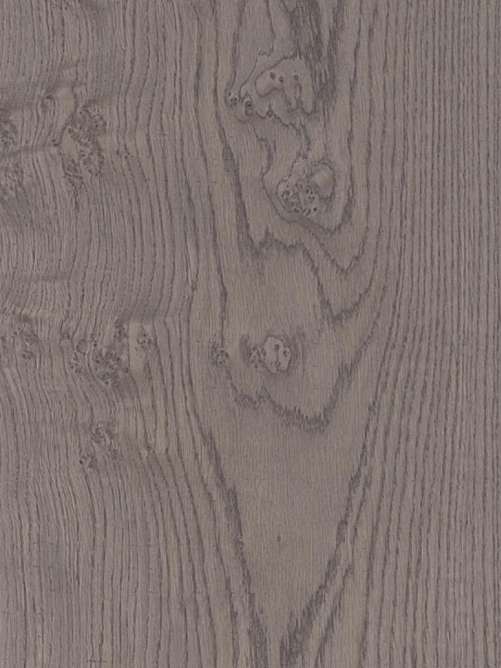 One of the most common trees in European forests, this oak has long been associated with the mythological gods due to its immense size, strength, and longevity. Like most oaks, the grain is straight with broad rays that produce a lively flake effect in flat or quarter cut wood and straight combed grain in rift cut. The golden-brown wood is slightly darker than American white oak and slightly lighter than English brown oak. Fumed veneer produces a rich chocolate-brown color similar to tropical and African woods. CoCo (color-imbued) options are available in several shades of gray and brown. Vintage oak is sliced from the hand-hewn beams of reclaimed wood from old barns and farmhouses across Europe; this rustic looking veneer is intended for use in random matched sequences. Learn About Veneer Cut & Matching
One of the most common trees in European forests, this oak has long been associated with the mythological gods due to its immense size, strength, and longevity. Like most oaks, the grain is straight with broad rays that produce a lively flake effect in flat or quarter cut wood and straight combed grain in rift cut. The golden-brown wood is slightly darker than American white oak and slightly lighter than English brown oak. Fumed veneer produces a rich chocolate-brown color similar to tropical and African woods. CoCo (color-imbued) options are available in several shades of gray and brown. Vintage oak is sliced from the hand-hewn beams of reclaimed wood from old barns and farmhouses across Europe; this rustic looking veneer is intended for use in random matched sequences. Learn About Veneer Cut & Matching -
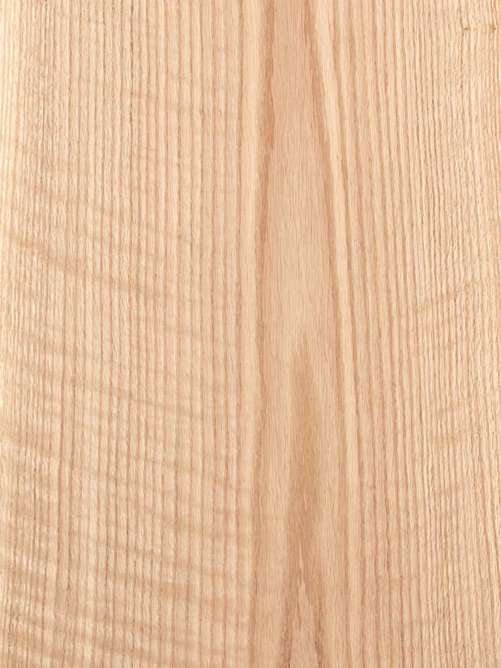 North American oak is well suited for rustic or modern interiors. While different growing conditions can produce a range of colors, in general, it’s slightly redder, more uniform in color, and has a less prominent flake figure than white oak. The grain is firm and straight, somewhat coarse with large pores. Rift cut veneer produces a very straight, combed grain effect. Learn About Veneer Cut & Matching
North American oak is well suited for rustic or modern interiors. While different growing conditions can produce a range of colors, in general, it’s slightly redder, more uniform in color, and has a less prominent flake figure than white oak. The grain is firm and straight, somewhat coarse with large pores. Rift cut veneer produces a very straight, combed grain effect. Learn About Veneer Cut & Matching -
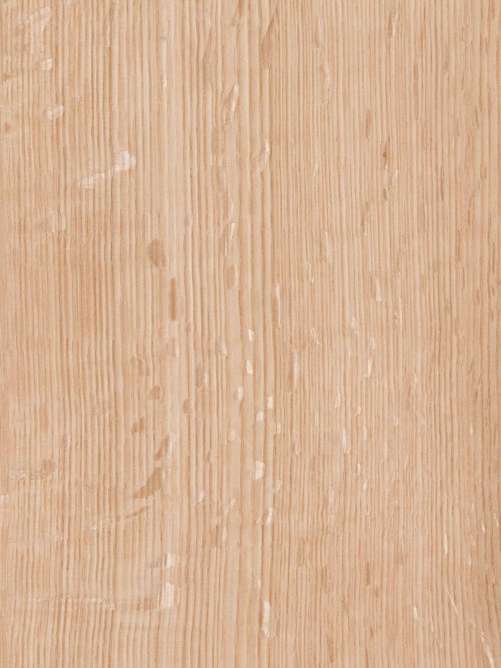 North American oak is well suited for rustic or modern interiors. While different growing conditions can produce a range of colors, in general, it’s slightly redder, more uniform in color, and has a less prominent flake figure than white oak. The grain is firm and straight, somewhat coarse with large pores. Rift cut veneer produces a very straight, combed grain effect. Learn About Veneer Cut & Matching
North American oak is well suited for rustic or modern interiors. While different growing conditions can produce a range of colors, in general, it’s slightly redder, more uniform in color, and has a less prominent flake figure than white oak. The grain is firm and straight, somewhat coarse with large pores. Rift cut veneer produces a very straight, combed grain effect. Learn About Veneer Cut & Matching -
 North American oak is well suited for rustic or modern interiors. While different growing conditions can produce a range of colors, in general, it’s slightly redder, more uniform in color, and has a less prominent flake figure than white oak. The grain is firm and straight, somewhat coarse with large pores. Rift cut veneer produces a very straight, combed grain effect. Learn About Veneer Cut & Matching
North American oak is well suited for rustic or modern interiors. While different growing conditions can produce a range of colors, in general, it’s slightly redder, more uniform in color, and has a less prominent flake figure than white oak. The grain is firm and straight, somewhat coarse with large pores. Rift cut veneer produces a very straight, combed grain effect. Learn About Veneer Cut & Matching -
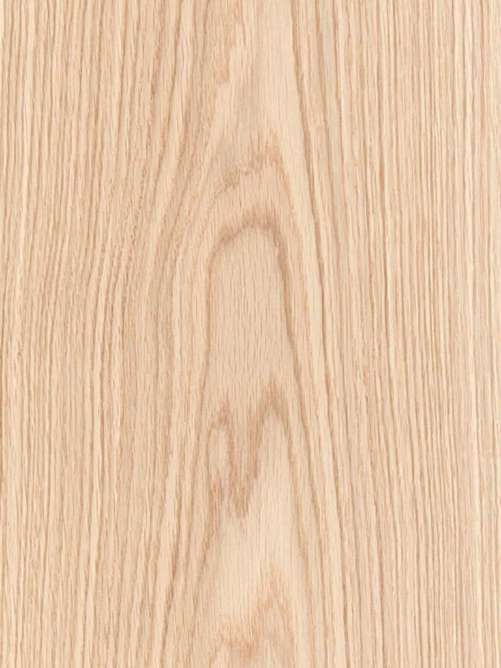 In folklore, white oak is a symbol of strength and longevity. This domestic standard is a bit smaller in diameter than European oak and ranges in color from biscuit to golden brown to somewhat gray. It has a distinctive grain pattern and abundant angular pores that produce a wonderful flake pattern in the quarter and flat cut veneers. Rift cut, the veneer produces a straight, combed grain with minimal flake. Fumed, the wood turns a warm dark brown reminiscent of Arts & Crafts-style furniture. Rustic options have rich character marks and grain variations for a truly rustic look (intended for random matched sequences). Also available in recon and rough cut. Learn About Veneer Cut & Matching
In folklore, white oak is a symbol of strength and longevity. This domestic standard is a bit smaller in diameter than European oak and ranges in color from biscuit to golden brown to somewhat gray. It has a distinctive grain pattern and abundant angular pores that produce a wonderful flake pattern in the quarter and flat cut veneers. Rift cut, the veneer produces a straight, combed grain with minimal flake. Fumed, the wood turns a warm dark brown reminiscent of Arts & Crafts-style furniture. Rustic options have rich character marks and grain variations for a truly rustic look (intended for random matched sequences). Also available in recon and rough cut. Learn About Veneer Cut & Matching -
 In folklore, white oak is a symbol of strength and longevity. This domestic standard is a bit smaller in diameter than European oak and ranges in color from biscuit to golden brown to somewhat gray. It has a distinctive grain pattern and abundant angular pores that produce a wonderful flake pattern in the quarter and flat cut veneers. Rift cut, the veneer produces a straight, combed grain with minimal flake. Fumed, the wood turns a warm dark brown reminiscent of Arts & Crafts-style furniture. Rustic options have rich character marks and grain variations for a truly rustic look (intended for random matched sequences). Also available in recon and rough cut. Learn About Veneer Cut & Matching
In folklore, white oak is a symbol of strength and longevity. This domestic standard is a bit smaller in diameter than European oak and ranges in color from biscuit to golden brown to somewhat gray. It has a distinctive grain pattern and abundant angular pores that produce a wonderful flake pattern in the quarter and flat cut veneers. Rift cut, the veneer produces a straight, combed grain with minimal flake. Fumed, the wood turns a warm dark brown reminiscent of Arts & Crafts-style furniture. Rustic options have rich character marks and grain variations for a truly rustic look (intended for random matched sequences). Also available in recon and rough cut. Learn About Veneer Cut & Matching -
 In folklore, white oak is a symbol of strength and longevity. This domestic standard is a bit smaller in diameter than European oak and ranges in color from biscuit to golden brown to somewhat gray. It has a distinctive grain pattern and abundant angular pores that produce a wonderful flake pattern in the quarter and flat cut veneers. Rift cut, the veneer produces a straight, combed grain with minimal flake. Fumed, the wood turns a warm dark brown reminiscent of Arts & Crafts-style furniture. Rustic options have rich character marks and grain variations for a truly rustic look (intended for random matched sequences). Also available in recon and rough cut. Learn About Veneer Cut & Matching
In folklore, white oak is a symbol of strength and longevity. This domestic standard is a bit smaller in diameter than European oak and ranges in color from biscuit to golden brown to somewhat gray. It has a distinctive grain pattern and abundant angular pores that produce a wonderful flake pattern in the quarter and flat cut veneers. Rift cut, the veneer produces a straight, combed grain with minimal flake. Fumed, the wood turns a warm dark brown reminiscent of Arts & Crafts-style furniture. Rustic options have rich character marks and grain variations for a truly rustic look (intended for random matched sequences). Also available in recon and rough cut. Learn About Veneer Cut & Matching -
 In folklore, white oak is a symbol of strength and longevity. This domestic standard is a bit smaller in diameter than European oak and ranges in color from biscuit to golden brown to somewhat gray. It has a distinctive grain pattern and abundant angular pores that produce a wonderful flake pattern in the quarter and flat cut veneers. Rift cut, the veneer produces a straight, combed grain with minimal flake. Fumed, the wood turns a warm dark brown reminiscent of Arts & Crafts-style furniture. Rustic options have rich character marks and grain variations for a truly rustic look (intended for random matched sequences). Also available in recon and rough cut. Learn About Veneer Cut & Matching
In folklore, white oak is a symbol of strength and longevity. This domestic standard is a bit smaller in diameter than European oak and ranges in color from biscuit to golden brown to somewhat gray. It has a distinctive grain pattern and abundant angular pores that produce a wonderful flake pattern in the quarter and flat cut veneers. Rift cut, the veneer produces a straight, combed grain with minimal flake. Fumed, the wood turns a warm dark brown reminiscent of Arts & Crafts-style furniture. Rustic options have rich character marks and grain variations for a truly rustic look (intended for random matched sequences). Also available in recon and rough cut. Learn About Veneer Cut & Matching -
 In folklore, white oak is a symbol of strength and longevity. This domestic standard is a bit smaller in diameter than European oak and ranges in color from biscuit to golden brown to somewhat gray. It has a distinctive grain pattern and abundant angular pores that produce a wonderful flake pattern in the quarter and flat cut veneers. Rift cut, the veneer produces a straight, combed grain with minimal flake. Fumed, the wood turns a warm dark brown reminiscent of Arts & Crafts-style furniture. Rustic options have rich character marks and grain variations for a truly rustic look (intended for random matched sequences). Also available in recon and rough cut. Learn About Veneer Cut & Matching
In folklore, white oak is a symbol of strength and longevity. This domestic standard is a bit smaller in diameter than European oak and ranges in color from biscuit to golden brown to somewhat gray. It has a distinctive grain pattern and abundant angular pores that produce a wonderful flake pattern in the quarter and flat cut veneers. Rift cut, the veneer produces a straight, combed grain with minimal flake. Fumed, the wood turns a warm dark brown reminiscent of Arts & Crafts-style furniture. Rustic options have rich character marks and grain variations for a truly rustic look (intended for random matched sequences). Also available in recon and rough cut. Learn About Veneer Cut & Matching -
 At first glance, paldao resembles American black walnut. This enormous tree is most often found along streams and marshy soils in Indonesia and the Philippines. Paldao grows with a remarkable buttress encircling the lower trunk creating 40’ diameter growths which remote tribes believed held sprits. This is a beautiful veneer: a grey-brown background streaked with highly decorative dark stripes. Flat cut wood produces a cathedral pattern; quarter cut wood has a stripy contrast and is often finely figured. Learn About Veneer Cut & Matching
At first glance, paldao resembles American black walnut. This enormous tree is most often found along streams and marshy soils in Indonesia and the Philippines. Paldao grows with a remarkable buttress encircling the lower trunk creating 40’ diameter growths which remote tribes believed held sprits. This is a beautiful veneer: a grey-brown background streaked with highly decorative dark stripes. Flat cut wood produces a cathedral pattern; quarter cut wood has a stripy contrast and is often finely figured. Learn About Veneer Cut & Matching -
 This wood is indigenous to the Yucatan Peninsula and is prized for its dramatic, saturated coloring—reddish brown with black, violets, and oranges typically mixed in. The grain is typically straight with some irregularity. It’s a premier choice for high-end furniture and interiors and is highly regarded as a tonewood for marimbas and xylophones, earning its nickname “the wood that sings. Learn About Veneer Cut & Matching
This wood is indigenous to the Yucatan Peninsula and is prized for its dramatic, saturated coloring—reddish brown with black, violets, and oranges typically mixed in. The grain is typically straight with some irregularity. It’s a premier choice for high-end furniture and interiors and is highly regarded as a tonewood for marimbas and xylophones, earning its nickname “the wood that sings. Learn About Veneer Cut & Matching -
 This European fruit tree produces a very fine-grained wood with a uniform texture and a partial flame that is both beautiful and decorative. The wood is often pith-marked and occurs in colors from rosy cream to light reddish brown in both plain and figured logs. When fumed, pearwood turns a rich, dark brown; when stained black, it provides an excellent substitute for ebony. Learn About Veneer Cut & Matching
This European fruit tree produces a very fine-grained wood with a uniform texture and a partial flame that is both beautiful and decorative. The wood is often pith-marked and occurs in colors from rosy cream to light reddish brown in both plain and figured logs. When fumed, pearwood turns a rich, dark brown; when stained black, it provides an excellent substitute for ebony. Learn About Veneer Cut & Matching -
 A cousin of the hickory, the pecan tree was so central to native Americans in the lower Mississippi River valley that it was associated with the Great Spirit. Today the tree is cultivated in southern orchards for nuts and is prized as a fine cabinet wood. It has a typically straight grain, a medium texture, low natural sheen, a medium reddish-brown heartwood and paler yellow sapwood, and maybe figured. Pecan stains well and is sometimes stained to match or replicate other woods. Learn About Veneer Cut & Matching
A cousin of the hickory, the pecan tree was so central to native Americans in the lower Mississippi River valley that it was associated with the Great Spirit. Today the tree is cultivated in southern orchards for nuts and is prized as a fine cabinet wood. It has a typically straight grain, a medium texture, low natural sheen, a medium reddish-brown heartwood and paler yellow sapwood, and maybe figured. Pecan stains well and is sometimes stained to match or replicate other woods. Learn About Veneer Cut & Matching

